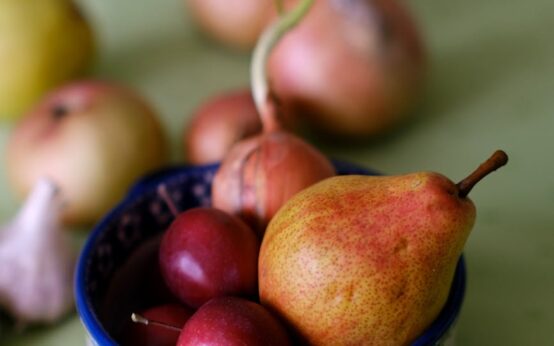Unlocking Plant Power: Your Ultimate Guide to the Top Sources of Plant-Based Protein
Let’s be real for a second. The moment you tell someone you’re eating more plant-based meals, or going fully vegan, the first question is almost always, “But where do you get your protein?” It’s a question loaded with skepticism, born from decades of marketing that has cemented steak and chicken breasts as the kings of protein. But here’s the secret: getting enough high-quality plant-based protein is not only possible, it’s incredibly easy, delicious, and brings a whole host of other health benefits to the table. Forget the myths. Plants are powerful.
This guide isn’t just a list. It’s your roadmap to building strong muscles, feeling energized, and fueling your body effectively, all without a single animal product. We’re going to explore the champs, the underdogs, and the surprising sources you might already have in your pantry. Ready to feel amazing? Let’s go.
Key Takeaways
- Variety is Key: A diverse plant-based diet easily provides all the essential amino acids your body needs to thrive.
- Beyond Tofu: While soy is a fantastic option, the world of plant protein is vast, including legumes, grains, nuts, seeds, and even vegetables.
- Protein is Everywhere: You’ll be surprised to find significant protein in everyday foods like oats, potatoes, and broccoli, making it easy to hit your goals.
- Whole Foods First: Focusing on whole-food sources of protein also provides fiber, vitamins, minerals, and antioxidants that support overall health.
The Powerhouses: Legumes and Beans
If you’re building a plant-based diet, legumes are the foundation. They are inexpensive, versatile, and absolutely packed with protein, fiber, and complex carbohydrates. They are the definition of a slow-release energy food that keeps you full and satisfied for hours.
Lentils: The Humble Hero
Don’t sleep on lentils. They are one of the most potent sources of plant-based protein available. A single cooked cup packs about 18 grams of protein and a staggering 16 grams of fiber. That’s more than half your daily fiber needs! They come in various colors—brown, green, red, black—each with a slightly different texture and cooking time. Red lentils cook down into a creamy puree, perfect for soups and dahls, while brown and green lentils hold their shape better, making them ideal for salads, veggie burgers, and hearty stews. Plus, they don’t require pre-soaking. A true weeknight dinner champion.
Chickpeas (Garbanzo Beans): More Than Just Hummus
We all love hummus, but the humble chickpea has so much more to offer. One cup of cooked chickpeas provides around 15 grams of protein. Their firm texture and nutty flavor make them incredibly versatile. You can toss them into salads for a protein boost, roast them with spices for a crunchy, addictive snack (seriously, try it), or mash them up for a fantastic tuna-salad-style sandwich filling. They’re also the star of falafel and countless curries. Having a can of chickpeas in your pantry is like having a secret weapon for quick, healthy meals.

Black Beans, Kidney Beans, and a World of Others
The bean family is vast and wonderful. Black beans, with about 15 grams of protein per cup, are a staple in Latin American cuisine for a reason—they’re delicious in tacos, burritos, and soups. Kidney beans, also packing around 15 grams per cup, are essential for a good chili. Pinto, cannellini, navy beans… the list goes on. Each offers a similar protein punch along with unique flavors and textures. The best strategy? Keep a variety on hand. A simple bowl of rice and beans isn’t just a budget-friendly meal; it’s a nutritionally complete powerhouse that has sustained cultures for centuries.
Soy-Based Superstars: The Complete Protein Source
Soy often gets a complicated rap, but the vast majority of concerns are based on outdated or misinterpreted studies. Whole, minimally processed soy foods are not only safe but are also one of the few plant sources that are considered a “complete” protein, meaning they contain all nine essential amino acids our bodies can’t produce on their own.
A Quick Note on ‘Complete’ Proteins: The idea that you must combine different plant foods at every single meal (like rice and beans) to form a complete protein is outdated. Your body is smart! It creates a pool of amino acids from everything you eat throughout the day. As long as you’re eating a varied diet of plants, you’ll get everything you need. It’s that simple.
Tofu: The Versatile Chameleon
Tofu is made from condensed soy milk, pressed into solid white blocks. It’s the ultimate culinary chameleon. Its neutral flavor means it will soak up any marinade, sauce, or seasoning you throw at it. The key is in the preparation. For a firm, ‘meaty’ texture, you must press it first to remove excess water. You can buy a tofu press, or simply wrap the block in paper towels and place something heavy on top for 30 minutes. A firm or extra-firm block of tofu contains about 20-22 grams of protein per cup. You can crumble it for scrambles, cube it for stir-fries, bake it, fry it, or blend silken tofu into creamy sauces and desserts.
Tempeh: The Fermented Powerhouse
If you find tofu’s texture too soft, meet your new best friend: tempeh. It’s made from whole, fermented soybeans that are pressed into a dense, firm cake. The fermentation process makes it easier to digest and gives it a distinct nutty, earthy flavor. It has a fantastic, chewy texture that holds up incredibly well to grilling and pan-frying. A cup of tempeh boasts an impressive 31 grams of protein, making it one of the most protein-dense plant foods available. Slice it thin for sandwiches, crumble it into pasta sauces, or marinate and grill it like a steak.
Edamame: The Simple Snack
Edamame are young, green soybeans, often served steamed in their pods and sprinkled with a little sea salt. They’re a simple, fun, and incredibly nutritious snack or appetizer. A single cup of shelled edamame delivers about 18 grams of protein along with a healthy dose of fiber, folate, and vitamin K. Keep a bag of frozen edamame on hand for a quick protein boost to add to salads, grain bowls, or just to snack on.
Grains That Pack a Punch
When you think of grains, you probably think of carbs. And you’re right! But some grains are also surprisingly high in protein, adding another layer of fuel to your meals.
Quinoa: The Complete Protein King
Quinoa (pronounced KEEN-wah) has earned its superfood status. It’s technically a seed but is prepared and eaten like a grain. Like soy, it’s a complete protein, offering all nine essential amino acids. A cooked cup contains about 8 grams of protein. It cooks up in about 15 minutes, making it a fantastic and fast base for salads and grain bowls. Its fluffy texture and slightly nutty flavor make it a great substitute for rice. Pro tip: Always rinse your quinoa before cooking to remove its natural coating, called saponin, which can taste bitter.
Seitan: The “Wheat Meat” Wonder
Seitan is a bit of a marvel. Made from gluten, the main protein in wheat, it has a remarkably meat-like texture that can be uncanny. When it comes to pure protein density, seitan is an absolute monster. A 100g serving can contain 25 grams of protein or more, depending on the brand and preparation. It’s very low in fat and carbs. Because it’s essentially pure wheat protein, it’s obviously not suitable for anyone with celiac disease or gluten sensitivity. You can buy it pre-made or make it yourself from vital wheat gluten flour. It’s incredible when sliced thin for gyros, browned for stews, or formed into cutlets.

Oats and Spelt
Your morning bowl of oatmeal is doing more than just warming you up. A cup of cooked oats has about 6 grams of protein. It’s a great start to the day. For an even bigger boost, try spelt, an ancient wheat variety with a chewy texture and sweet, nutty flavor. It contains about 11 grams of protein per cooked cup and is a fantastic alternative to rice or quinoa.
Nuts, Seeds, and Their Butters
Nuts and seeds are nutritional gold. They are rich in healthy fats, vitamins, and minerals, and they also provide a significant amount of protein. They are perfect for snacking, sprinkling on meals, or blending into sauces.
Hemp, Chia, and Flax Seeds: The Tiny Titans
Don’t underestimate these tiny seeds.
Hemp seeds (or hemp hearts) are a standout, offering a whopping 10 grams of protein in just three tablespoons. They have a lovely, mild, nutty taste and are perfect sprinkled over salads, yogurt, or blended into smoothies.
Chia seeds are famous for their gelling ability, but they also pack about 5 grams of protein in two tablespoons. Make chia pudding or use them as an egg replacer in baking.
Flax seeds, with about 4 grams of protein per two tablespoons, are best consumed ground to unlock their nutrients, especially their omega-3 fatty acids.
Nut Butters: A Delicious Protein Boost
Who doesn’t love peanut butter? It’s not just a childhood favorite; it’s a legitimate protein source. Two tablespoons of peanut butter provide about 8 grams of protein. Almond butter is right there with it, at around 7 grams. When choosing a nut butter, always read the label. Opt for brands where the only ingredients are nuts and maybe a little salt. Avoid the ones with added sugars, hydrogenated oils, and other fillers. Spread it on toast, add a scoop to your oatmeal, or blend it into a savory Thai-style peanut sauce.
Don’t Forget the Veggies!
This might be the most surprising category for many people. While vegetables aren’t as protein-dense as legumes or soy, the protein adds up quickly, especially when you eat a large volume of them (which you should!). Every gram counts towards your daily total.
Some of the top contenders include:
- Potatoes: A large baked potato has about 8 grams of protein. Yes, really.
- Broccoli: One cup of chopped broccoli contains about 3 grams of protein.
- Spinach: A cup of cooked spinach provides over 5 grams of protein.
- Asparagus: One cup has nearly 3 grams of protein.
- Sweet Corn: A cup of corn kernels contains about 5 grams of protein.

The point isn’t to rely solely on broccoli for your protein needs. It’s to understand that when you build a meal—say, a baked potato topped with black bean chili and a side of steamed broccoli—the protein from every single component adds up to create a truly high-protein, nutrient-dense meal.
Conclusion
The myth that a plant-based diet is somehow deficient in protein is just that—a myth. The reality is that the plant kingdom offers a vast, diverse, and powerful array of protein sources that can fuel any lifestyle, from the casual jogger to the competitive athlete. By incorporating a variety of legumes, soy products, whole grains, nuts, seeds, and vegetables into your diet, you won’t just meet your protein needs; you’ll exceed them, all while flooding your body with fiber, vitamins, and minerals. So go ahead, fill your plate with plants. Your muscles, and your taste buds, will thank you.
FAQ
Do I need to combine plant proteins to make a ‘complete’ protein at every meal?
No, this is an outdated concept. While it’s true that some plant foods are lower in certain essential amino acids than others (e.g., beans are lower in methionine, grains are lower in lysine), your body maintains a pool of amino acids. As long as you eat a variety of plant-based protein sources throughout the day—beans, lentils, nuts, seeds, whole grains—your body will have all the building blocks it needs to synthesize complete proteins. You don’t need to stress about specific food pairings at each meal.
How much plant-based protein do I actually need?
The Recommended Dietary Allowance (RDA) for protein for a generally healthy adult is 0.8 grams per kilogram of body weight (or about 0.36 grams per pound). For example, a 150-pound person would need about 54 grams of protein per day. However, this is a minimum to prevent deficiency. Active individuals, athletes, or those looking to build muscle may benefit from a higher intake, often in the range of 1.2 to 2.0 grams per kilogram of body weight. The best approach is to include a good source of protein with every meal and listen to your body’s hunger and energy cues.



 11 Superfoods to Boost Immunity & Stay Healthy Naturally
11 Superfoods to Boost Immunity & Stay Healthy Naturally  Diet and Mental Health: Eat Your Way to a Better Mood
Diet and Mental Health: Eat Your Way to a Better Mood  Food Allergies vs. Intolerance: What’s the Difference?
Food Allergies vs. Intolerance: What’s the Difference?  5 Superfoods to Boost Your Immunity Naturally
5 Superfoods to Boost Your Immunity Naturally  Processed Foods: The Hidden Dangers for Your Health
Processed Foods: The Hidden Dangers for Your Health  Eat for Better Sleep: Foods for a Restful Night
Eat for Better Sleep: Foods for a Restful Night  Social Media on Blockchain: The Next Digital Frontier
Social Media on Blockchain: The Next Digital Frontier  What is a Flash Loan? A DeFi Deep Dive for Beginners
What is a Flash Loan? A DeFi Deep Dive for Beginners  Crypto Swing vs Day Trading: Which Style Wins?
Crypto Swing vs Day Trading: Which Style Wins?  A Guide to NFT Generative Art Platforms (2024)
A Guide to NFT Generative Art Platforms (2024)  Crypto’s Carbon Footprint: The Real, Nuanced Story
Crypto’s Carbon Footprint: The Real, Nuanced Story  Join a Web3 Community: The Ultimate Networking Guide
Join a Web3 Community: The Ultimate Networking Guide